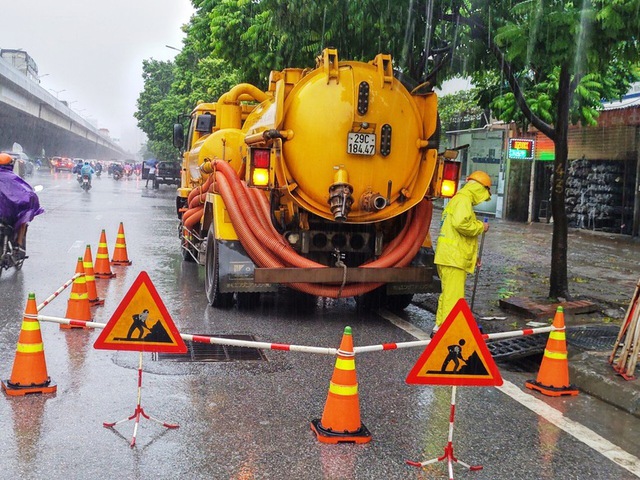Ha Noi embraces sustainable architecture to combat pollution and flooding
VGP - Ha Noi is grappling with shrinking green spaces and strained infrastructure amid rapid urbanization, underscoring the urgent need for a technology-driven, innovative green city model.

With worsening air pollution, frequent flooding, and limited greenery, the capital is turning to sustainable architecture as a central strategy to build a greener, more resilient urban environment. Urban planners note that uneven tree coverage, hazardous PM2.5 levels, and overburdened drainage systems have amplified environmental risks, highlighting the need for targeted micro-architectural solutions.
"These challenges harm the environment, threaten public health, and reduce productivity. Given Ha Noi's limited land, the city must adopt micro-architectural approaches that improve microclimates and quality of life," said Dr. Phan Dang Son, Chairman of the Viet Nam Association of Architects.
The Ha Noi Capital Master Plan 2021–2030 envisions green and smart urban growth through the expansion of parks, lakes, and public spaces, underpinned by digital technologies in city management.
Meanwhile, the National Digital Transformation Strategy to 2030 enables Ha Noi to leverage geographic information systems (GIS), big data, and the Internet of Things (IoT) to manage land, monitor air and water quality, and optimize energy use.
Resolution No. 68-NQ/TW on private sector development encourages business investment in green infrastructure.
"These initiatives provide a strong foundation for Ha Noi's green urban development. Technology is the tool, the private sector is the driver, global integration is the enabler, and cultural identity is at the heart," said Dr. Son, emphasizing sustainable architecture in schools, housing, and public spaces.
According to Dr. Nguyen Viet Huy from Ha Noi University of Civil Engineering, small-scale interventions—such as rain gardens, parklets, and pedestrian-friendly zones—can reduce surface temperatures by 5–10°C, increase space utilization by 20–30%, and revitalize community life. In Ha Noi, such models—from Hoan Kiem pedestrian areas to alleyway playgrounds—have successfully mitigated heat and air pollution while reinforcing cultural identity.
For residential areas, including tube houses and older apartment blocks, the city should require permeable surfaces, green roofs, and vertical gardens, alongside climate simulation tools to optimize ventilation and reduce urban heat islands. Schools, too, should incorporate green zones and permeable playgrounds with smart sensors to monitor environmental conditions.
"Public–private partnerships and community engagement are essential. Cities like Medellín and Seoul demonstrate that coordinated investment from the state, private sector, and local communities can rejuvenate public spaces," Dr. Huy said.
Architect Bui Thi Minh Nguyet from Ha Noi Open University added that unplanned construction, uncontrolled renovations, and inadequate waste management continue to degrade urban aesthetics and the environment.
Dr. Son stressed the need for a phased roadmap with clear milestones to ensure coordinated implementation, avoid fragmentation, and allow policy adjustments—paving the way for Ha Noi to become a green, smart city grounded in cultural identity and creative industry.
Earlier, downpours from the circulation of Typhoon Matmo drenched Hà Nội overnight and early morning Tuesday (October 7), leaving low-lying streets across the inner city under water. For many, it’s an unpleasant return to the flooding from Typhoon Bualoi, which killed at least 51 people in Viet Nam and caused around $600 million in damage.

